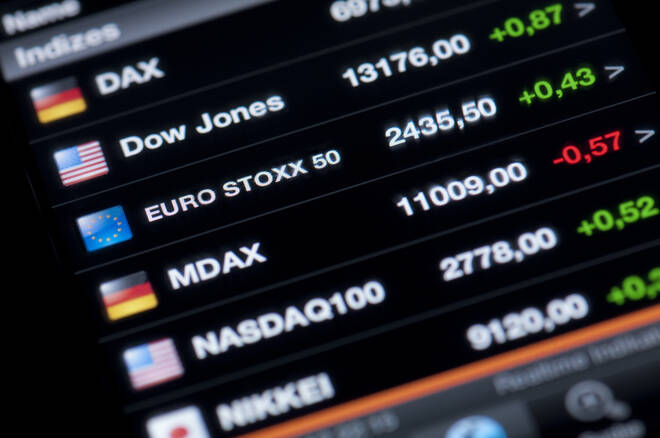Advertisement
Advertisement
Options Point To A Bear Market
Published: Jul 29, 2021, 06:34 GMT+00:00
Since March 01, 2021, I showed indicators suggesting bonds (TLT) would provide total returns greater than those of SPY (S&P 500). It was a call not shared by the consensus but is proving to be correct.
Summary
- Bonds outperform stocks during critical market declines.
- The business cycle provides valuable information about these periods.
- The options market is adding to the bearish signals for the market and the business cycle.
The business cycle is a powerful force investors should use to their advantage. It has been saying to be careful and to start adopting a defensive strategy.
The previous business cycle started in 2016, peaked in 2018, and ended in March 2020. The current business cycle began violently in March 2020. Its force created strong dislocations, further exacerbated by several stimulus programs and easy monetary policy.
The outcome has been a rapid ramp-up in production to replenish depleted inventories. The business had to aggressively buy commodities to produce goods, hire workers and pay higher wages, and increase borrowing to finance operations and improve productive capacity.
It is no coincidence most commodities have been soaring – from soybeans to lumber to metals to crude oil. Bond yields also jumped, worrying Wall Street about soaring interest rates. Inflation rose and is still rising rapidly.
These are the type of developments experienced toward the end of Phase 2 (see above chart) and cause the business cycle to transition from Phase 2 to Phase 3 due to their negative feedback.
In fact, the increase in inflation and interest rates has a negative impact on consumers’ purchasing power. The weaker trends in home and auto sales – two major sectors of the economy – are already reflecting the negative consequences of rising inflation, interest rates, and home prices.
Business, however, is still busy replenishing inventories. It has not yet been recognized demand is gradually waning. Eventually, manufacturers will realize they overbuilt inventories when profits fail expectations. The decision will have to be made to reduce production, reduce the purchase of raw materials, and reduce borrowing. The business cycle is not yet at this point, but we are very close to this defining moment.
Since the main cause of most slowdowns is rising inflation and rising interest rates, the slowdown will end when the inflation and interest rates decline enough to re-establish the purchasing power of consumers.
The patterns of previous business cycles suggest the decline could last one to two years depending on the damage created by rising inflation and interest rates to consumers’ purchasing power.
Source: StockCharts.com, The Peter Dag Portfolio Strategy and ManagementThe above chart is an updated version of the one discussed in previous articles. It shows an indicator derived from the option market (lower panel). The ratio of SPY divided by TLT is shown in the upper panel. A rising ratio means the returns from SPY are greater than those from TLT. A declining ratio means the returns from TLT are greater than those from SPY.
What makes this gauge particularly interesting is it has the same turning points of the business cycle indicator as discussed in the articles listed at the beginning.
The business cycles reflected by the option market are those of 2009-20012, 2012-2016, and 2016-2020. The most recent business cycle started in March 2020 and rose sharply until the beginning of 2021.
Growth, however, is slowing down and we are close to a peak in the business cycle. We are possibly already in Phase 3. This phase is recognized by weakness in commodities, a peak in bond yields, fluttering stock prices, and long-duration Treasury bonds outperforming the S&P 500.
The peak in the option market indicator confirms what we have been writing in the previous articles – total returns from long-dated Treasury bonds (TLT) will continue to outperform the returns of SPY as they did in the previous three cycles (see above chart).
What is the option market indicator saying about the strength of the market?
The above chart shows the graphs of SPY in the upper panel with its 200-day moving average and the graph of the option market indicator in the lower panel. The message is quite simple. The option market indicator will have to decline to much lower levels to signal a major buying opportunity.
If history repeats itself, the decline of this indicator is likely to last at least one year. The market, meanwhile, will struggle to make further gains as it did in previous cycles. This indicator is regularly updated in each issue of the Peter Dag Portfolio Strategy and Management. Readers of this article may enter an exclusive complimentary subscription on www.peterdag.com.
Key takeaways
- Business activity will slow down as long as the option market indicator declines.
- Commodities and yields will decline as long as the option market indicator declines.
- Total returns from TLT will continue to outperform those of SPY as long as the option market indicator declines.
- A major buy opportunity in stocks will occur when the option market indicator declines to much lower levels – a process likely to last at least one year.
About the Author
George Dagnino, PHDcontributor
George Dagnino, PhD, is chairman of Peter Dag Strategic Money Management. As the former chief economist and risk manager for Goodyear, he managed $4 billion of interest rates and currency hedge portfolios.
Advertisement
